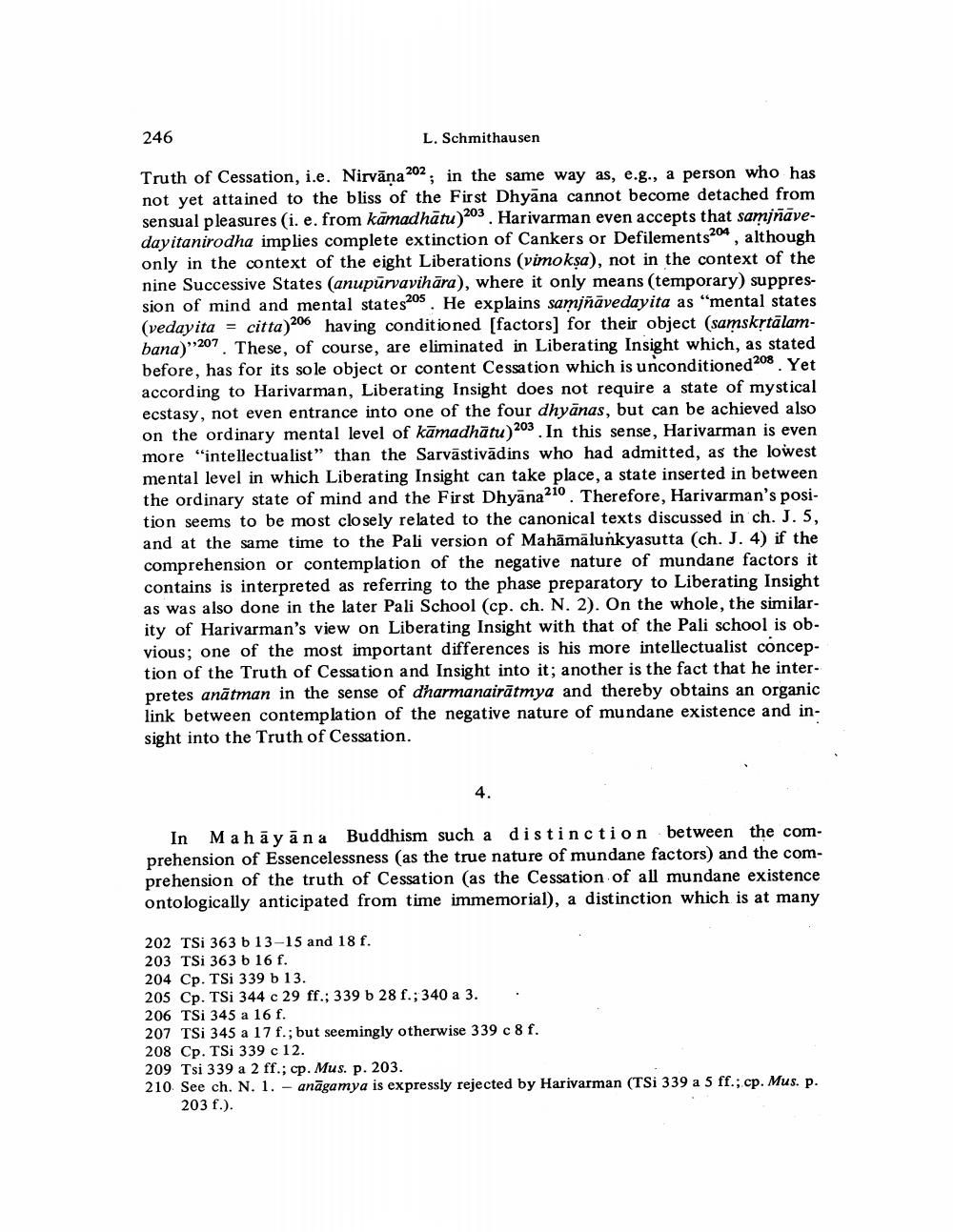________________
246
L. Schmithausen
Truth of Cessation, i.e. Nirvāņa 202; in the same way as, e.g., a person who has not yet attained to the bliss of the First Dhyāna cannot become detached from sensual pleasures (i. e. from kāmadhātu)203. Harivarman even accepts that samināvedayitanirodha implies complete extinction of Cankers or Defilements204, although only in the context of the eight Liberations (vimo kşa), not in the context of the nine Successive States (anupūrvavihāra), where it only means (temporary) suppression of mind and mental states20s. He explains samjñāvedayita as "mental states (vedayita = citta)206 having conditioned [factors) for their object (samskrtālambana)"207. These, of course, are eliminated in Liberating Insight which, as stated before, has for its sole object or content Cessation which is unconditioned 208. Yet according to Harivarman, Liberating Insight does not require a state of mystical ecstasy, not even entrance into one of the four dhyānas, but can be achieved also on the ordinary mental level of kāmadhātu) 203. In this sense, Harivarman is even more "intellectualist" than the Sarvāstivādins who had admitted, as the lowest mental level in which Liberating Insight can take place, a state inserted in between the ordinary state of mind and the First Dhyāna210. Therefore, Harivarman's position seems to be most closely related to the canonical texts discussed in ch. J. 5, and at the same time to the Pali version of Mahāmālunkyasutta (ch. J. 4) if the comprehension or contemplation of the negative nature of mundane factors it contains is interpreted as referring to the phase preparatory to Liberating Insight as was also done in the later Pali School (cp. ch. N. 2). On the whole, the similarity of Harivarman's view on Liberating Insight with that of the Pali school is obvious; one of the most important differences is his more intellectualist conception of the Truth of Cessation and Insight into it; another is the fact that he interpretes anātman in the sense of dharmanairātmya and thereby obtains an organic link between contemplation of the negative nature of mundane existence and insight into the Truth of Cessation.
In Mahāyāna Buddhism such a distinction between the comprehension of Essencelessness (as the true nature of mundane factors) and the comprehension of the truth of Cessation (as the Cessation of all mundane existence ontologically anticipated from time immemorial), a distinction which is at many
202 TSi 363 b 13-15 and 18 f. 203 TSi 363 b 16 f. 204 Cp. TSi 339 b 13. 205 Cp. TSi 344 c 29 ff.; 339 b 28 f.; 340 a 3. 206 TSi 345 a 16 f. 207 TSi 345 a 17 f.; but seemingly otherwise 339 c8f. 208 Cp. TSi 339 c 12. 209 Tsi 339 a 2 ff.; cp. Mus. p. 203. 210 See ch. N. 1. - anāgamya is expressly rejected by Harivarman (TSi 339 a 5 ff.; cp. Mus. p.
203 f.).




